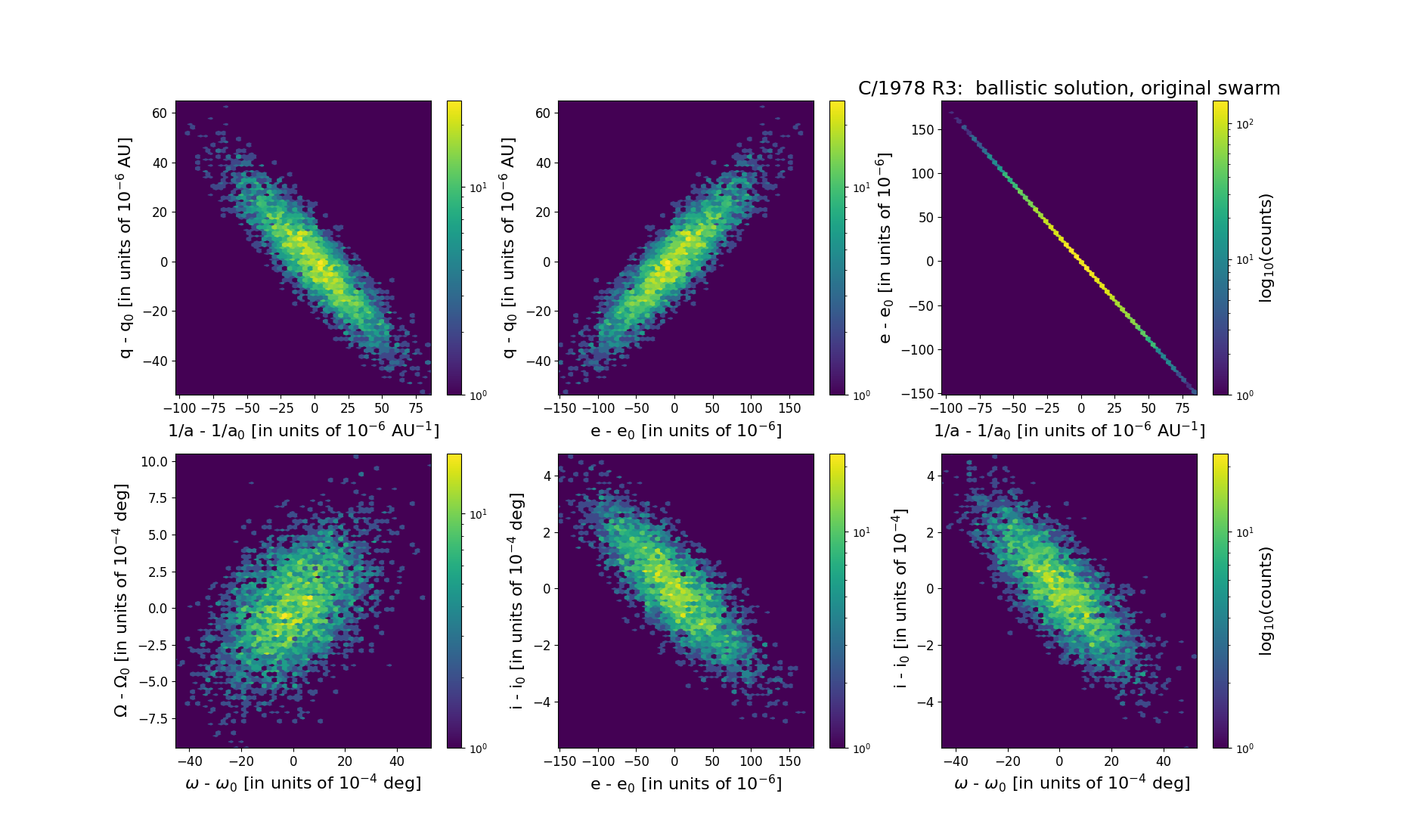C/1978 R3 Machholz
more info
Comet C/1978 R3 was discovered on 12 September 1978 by Donald E. Machholz (Mt Loma Prita, California, USA), that is about a month after its perihelion passage.This comet was last observed on late September 1979.
Comet had its closest approach to the Earth on 15 October 1978 (1.510 au), about a month after discovery.
Solution given here is based on data spanning over 1.03 yr in a range of heliocentric distances from 1.82 au to 4.89 au.
This Oort spike comet suffers small planetary perturbations during its passage through the planetary system; these perturbations lead to a more tight future orbit.See also Królikowska 2020.
Comet had its closest approach to the Earth on 15 October 1978 (1.510 au), about a month after discovery.
Solution given here is based on data spanning over 1.03 yr in a range of heliocentric distances from 1.82 au to 4.89 au.
This Oort spike comet suffers small planetary perturbations during its passage through the planetary system; these perturbations lead to a more tight future orbit.See also Królikowska 2020.
| solution description | ||
|---|---|---|
| number of observations | 52 | |
| data interval | 1978 09 14 – 1979 09 25 | |
| data type | observed only after perihelion (POST) | |
| data arc selection | entire data set (STD) | |
| range of heliocentric distances | 1.82 au – 4.89au | |
| detectability of NG effects in the comet's motion | NG effects not determinable | |
| type of model of motion | GR - gravitational orbit | |
| data weighting | NO | |
| number of residuals | 101 | |
| RMS [arcseconds] | 1.50 | |
| orbit quality class | 1b | |
| orbital elements (barycentric ecliptic J2000) | ||
|---|---|---|
| Epoch | 1678 04 14 | |
| perihelion date | 1978 08 12.62101255 | ± 0.00264648 |
| perihelion distance [au] | 1.76384510 | ± 0.00001699 |
| eccentricity | 0.99987568 | ± 0.00004882 |
| argument of perihelion [°] | 224.841833 | ± 0.001400 |
| ascending node [°] | 290.598363 | ± 0.000272 |
| inclination [°] | 130.65324 | ± 0.000145 |
| reciprocal semi-major axis [10-6 au-1] | 70.48 | ± 27.68 |
| file containing 5001 VCs swarm |
|---|
| 1978r3a1.bmi |

